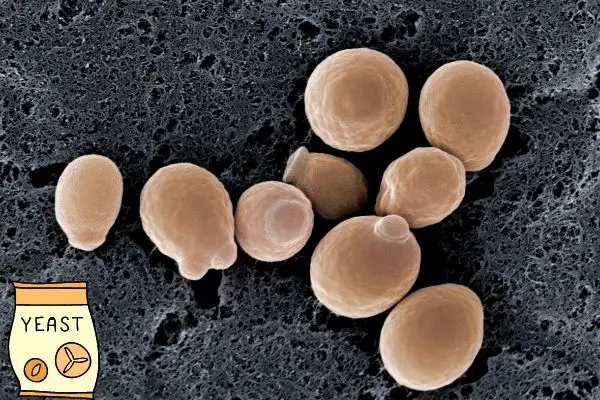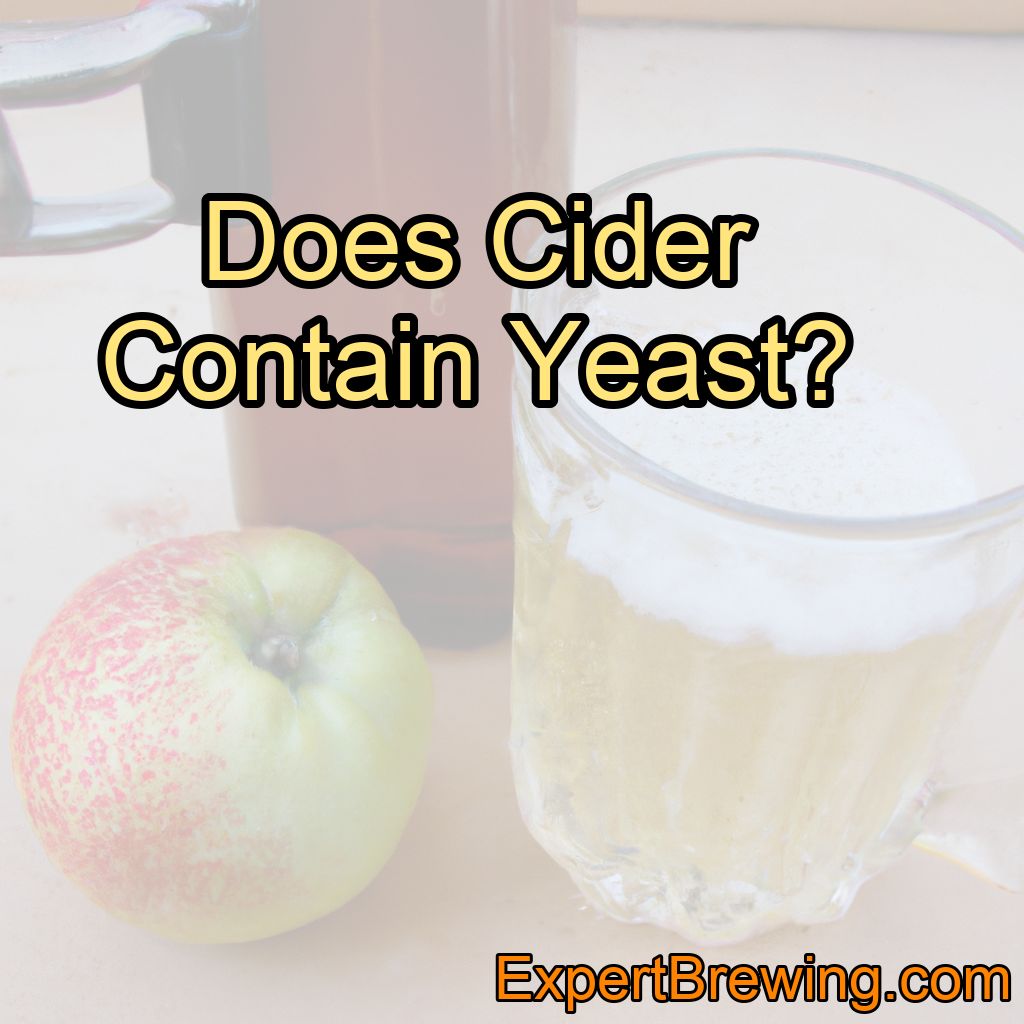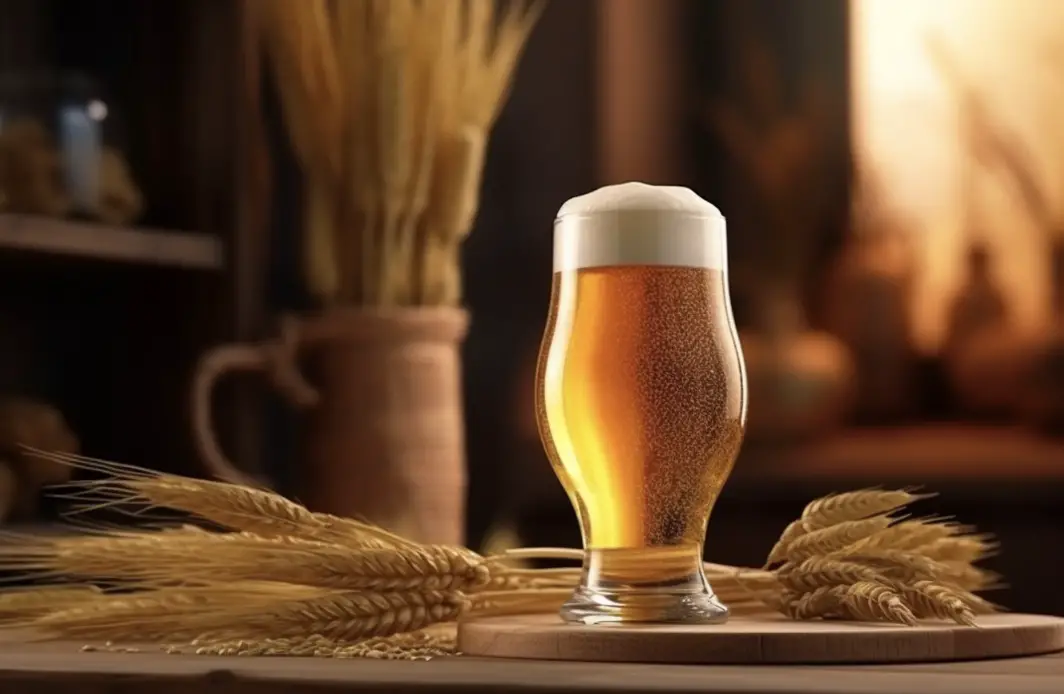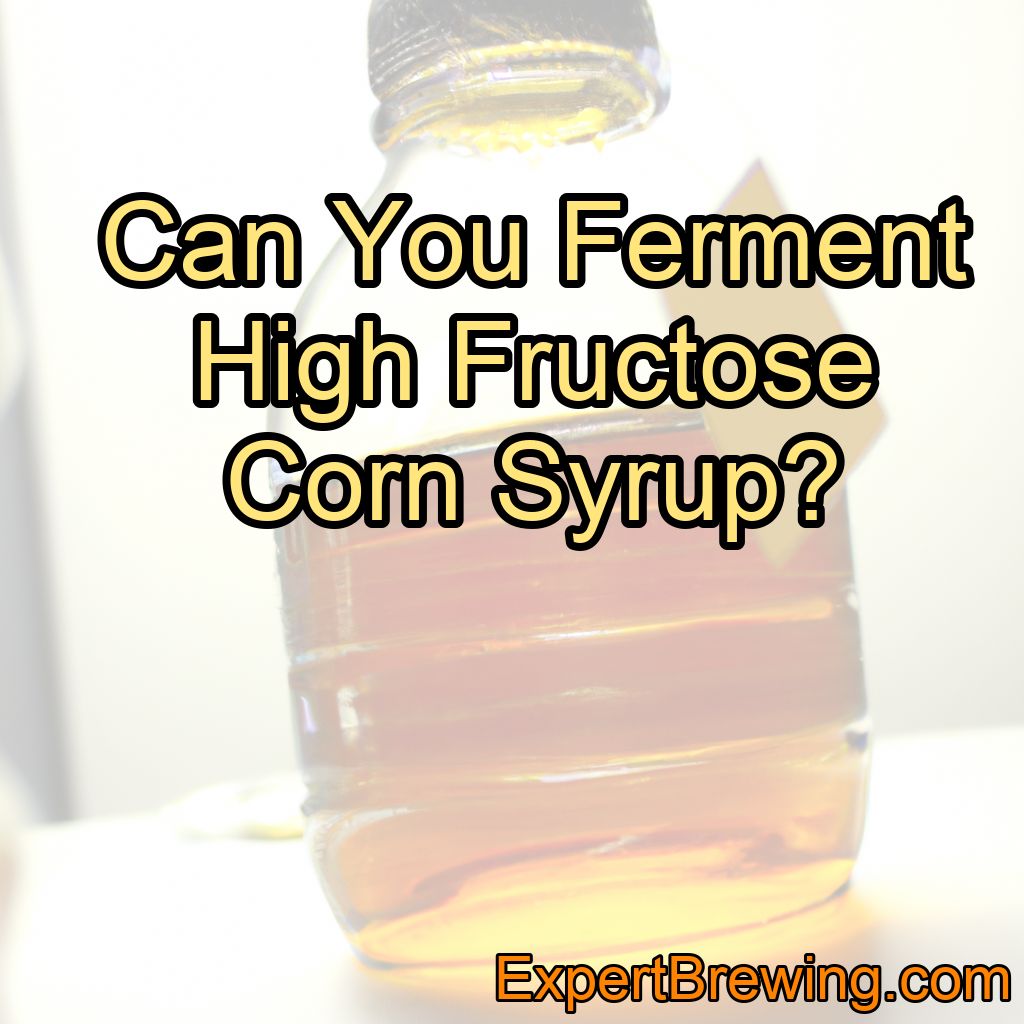Cider has been a popular beverage for centuries, often associated with cozy autumn months and crisp fall flavors.
Made from fermented apple juice, it’s a go-to drink for many who enjoy its sweet and tangy taste. But for those who are health-conscious or have dietary restrictions, you may be wondering: does cider contain yeast?
Yes, cider does contain yeast. Yeast is a crucial component in the fermentation process that turns apple juice into cider. The yeast consumes the sugar in the apple juice, converting it into alcohol and carbon dioxide, which gives cider its characteristic fizz and alcohol content.
Now that we’ve answered the main question, let’s dive deeper into the world of cider and explore the different types of yeast used in its production, how the fermentation process works, the role of wild yeast in traditional cider-making, and some frequently asked questions about yeast in cider.
Types of Yeast Used in Hard Cider
Cider can be made with various types of yeast, each contributing its unique flavor profile and characteristics to the final product. Here are some common types of yeast used in cider-making:
1. Saccharomyces Cerevisiae
This is the most common type of yeast used in cider production, as well as in brewing beer and making wine. It is known for its fast fermentation and high alcohol tolerance, making it an excellent choice for creating ciders with a higher alcohol content.

2. Saccharomyces Bayanus
This yeast strain is often used in winemaking, particularly for producing sparkling wines like Champagne.
It also works well for cider production, as it can ferment at lower temperatures and has a high tolerance for alcohol, allowing for a more extended fermentation process and a more complex flavor profile.
3. Brettanomyces
Brettanomyces, or “Brett” for short, is a type of wild yeast that can give cider a unique, funky, and earthy flavor. While some cider-makers avoid using Brett due to its potential to create off-flavors, others embrace it for the added complexity it can bring to the finished product.
How does the yeast strain affect your cider?
The yeast strain used in the fermentation process of hard cider can have a significant impact on its taste, appearance, alcohol content, and shelf life.
Here’s how different yeast strains can affect these characteristics:
- Taste: Different yeast strains can produce various flavor profiles during fermentation. Some strains may emphasize fruity esters, while others may create spicy or earthy notes. The choice of yeast can influence the overall taste profile of the cider, ranging from crisp and clean to complex and aromatic.
- Appearance: Yeast can affect the clarity and visual appearance of hard cider. Some strains tend to flocculate or settle at the bottom of the fermentation vessel, resulting in a clearer cider. Others may remain in suspension, leading to a cloudier appearance. The choice of yeast can determine whether the cider is clear or hazy.
- Alcohol content: Yeast plays a crucial role in converting sugars into alcohol during fermentation. Different yeast strains have varying levels of fermentation efficiency, which can impact the alcohol content of the cider. Some strains are highly attenuative and can ferment sugars more completely, resulting in a drier cider with higher alcohol content. Conversely, other strains may leave residual sugars, resulting in a sweeter cider with lower alcohol content.
- Shelf life: The yeast strain can influence the shelf life of hard cider through several mechanisms. Certain strains produce compounds that act as preservatives, such as sulfur dioxide or other antimicrobial agents, which can extend the shelf life. Additionally, the fermentation characteristics of the yeast, such as the production of organic acids and the ability to consume oxygen, can affect the cider’s stability and resistance to spoilage.
It’s important to note that other factors, such as apple varieties, fermentation temperature, and nutrient availability, can also impact the taste, appearance, alcohol content, and shelf life of hard cider.

The choice of yeast strain should be considered in conjunction with these factors to achieve the desired outcome.
Yeast and The Cider Fermentation Process
The fermentation process is the heart of cider-making, where the magic happens, and yeast plays a starring role. Here’s a step-by-step breakdown of how fermentation works in cider production:
1.Juicing: Apples are washed, crushed, and pressed to extract their juice. This juice contains natural sugars, which will serve as food for the yeast during fermentation.
2.Inoculation: The apple juice is “inoculated” with a specific yeast strain, meaning the yeast is introduced to the juice. Some cider-makers choose to rely on wild yeast present on the apples’ skins, while others prefer to use a commercially available yeast strain to have more control over the fermentation process and final flavor profile.
When you inoculate your cider, consider making a starter culture first to speed up the yeast growth!
3.Fermentation: Once the yeast is introduced to the apple juice, it begins consuming the sugars and converting them into alcohol and carbon dioxide. This process can take anywhere from a few days to several months, depending on the yeast strain, temperature, and desired flavor profile.
4.Clarification: After fermentation is complete, the cider is typically clarified to remove any remaining yeast, apple solids, and other particles. This can be done through filtration, fining agents, or by allowing the cider to sit undisturbed for an extended period, so the particles settle to the bottom.
5.Carbonation: The carbon dioxide produced during fermentation gives cider its fizz. Some cider-makers will bottle the cider directly after fermentation, capturing the natural carbonation, while others may remove the carbon dioxide during clarification and reintroduce it later through forced carbonation.
6.Bottling & Aging: The finished cider is bottled and can be consumed immediately or aged for several months to years, allowing the flavors to develop further.
Wild Yeast in Traditional Cider-Making
In traditional cider-making, the wild yeast present on the apples’ skins and in the environment is responsible for fermentation. This method is known as “spontaneous fermentation” and can result in a wide range of flavors and characteristics, as the unique mix of wild yeast strains imparts different qualities to the cider.

Although using wild yeast can be unpredictable and may lead to inconsistent results, many cider-makers embrace this traditional approach for the complexity and depth of flavor it can provide.
Additionally, some cider-makers may use a combination of wild yeast and commercial yeast strains to strike a balance between the consistency of commercial yeast and the unique flavors of wild yeast.
Conclusion
In conclusion, cider does indeed contain yeast, as it is a critical component in the fermentation process that turns apple juice into the delicious beverage we know and love. As we’ve seen, there are various types of yeast used in cider production, each with its unique characteristics and flavor contributions.
So, whether you’re sipping on a traditional cider made with wild yeast or enjoying a more modern, controlled fermentation using commercial yeast strains, you can appreciate the essential role yeast plays in creating the complex flavors and fizzy effervescence of your favorite cider.
To wrap up, here are 10 facts about yeast in cider:
1. Cider contains yeast, which is crucial for the fermentation process.
2. Yeast turns the sugar in apple juice into alcohol and carbon dioxide.
3. There are various types of yeast used in cider production, each with its unique characteristics.
4. Saccharomyces cerevisiae and Saccharomyces bayanus are common yeast strains used in cider-making.
5. Brettanomyces is a wild yeast that can give cider a unique, funky flavor.
6. Traditional cider-making often relies on wild yeast for fermentation.
7. Most commercial ciders are filtered and pasteurized, removing or killing any remaining yeast.
8. Bread yeast is not recommended for making cider, as it can produce off-flavors and a lower alcohol content.
9. Cider is typically gluten-free, as it does not contain any wheat, barley, or rye.
10. If you have a yeast allergy, consult with your doctor or allergist before consuming cider.
Frequently Asked Questions about Yeast in Cider
Does Cider Contain Live Yeast?
Most commercial ciders are filtered and pasteurized, which removes or kills any remaining yeast in the final product. However, some craft ciders or homemade ciders may still contain live yeast, particularly if they are unfiltered or bottle-conditioned.
Can You Get a Yeast Infection from Drinking Cider?
No, consuming cider does not cause yeast infections. Yeast infections are caused by an overgrowth of the Candida fungus, which is not found in cider or other fermented beverages.
Can I Use Bread Yeast to Make Cider?
While it is technically possible to use bread yeast to ferment apple juice and make cider, it is not recommended. Bread yeast is not well-suited for fermenting sugar into alcohol and may produce off-flavors or a lower alcohol content than desired. Instead, use a yeast strain specifically designed for cider-making or winemaking to achieve the best results.
Can I Drink Cider If I Have a Yeast Allergy?
If you have a yeast allergy, you should consult with your doctor or allergist before consuming cider, as it does contain yeast. While most commercial ciders are filtered and pasteurized, which removes or kills any remaining yeast, some craft ciders or homemade ciders may still contain live yeast, particularly if they are unfiltered or bottle-conditioned.
Why is yeast added to cider?
Yeast is added to cider to convert the natural sugars in the apple juice into alcohol through the process of fermentation.
What does yeast do in cider?
Yeast is responsible for converting the sugars in cider into alcohol through the process of fermentation.
Why does apple cider have yeast?
Apple cider has yeast because yeast is a natural microorganism that ferments the sugars in the apple juice, converting them into alcohol and carbon dioxide gas, which gives cider its characteristic fizziness.
Does apple cider contain yeast?
Yes, apple cider contains yeast. During the fermentation process, yeast converts the natural sugars in the apple cider into alcohol.
Which alcohol has no yeast?
All alcoholic beverages are produced through the process of fermentation, which involves yeast. Therefore, there is no alcohol that does not involve yeast in its production.
Do ciders use yeast?
Yes, ciders use yeast to ferment the apple juice into alcohol.




